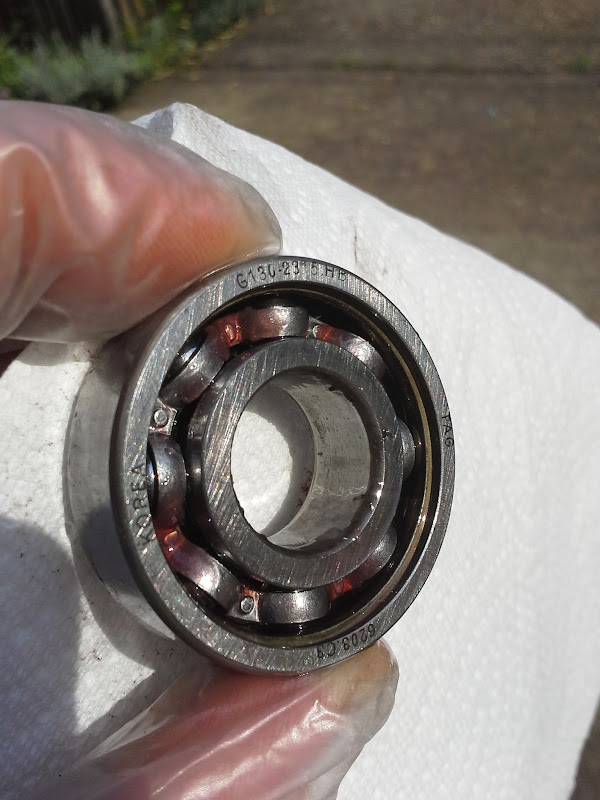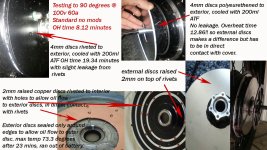What is with the obsession with alternative oils?
ATF or mineral oil is absolutely ideal, I don't understand why you would even need to experiment, especially with things much better used as food than lubricant in high temperature spinning motors.
To add my experiences to this thread:
I was previously running an HS3540 in a 26" rim with Hookworms, 20s lipo running ~65 amps. Something like 6kw peaks, travelling 12.5km each way on a daily basis. Prior to oil cooling I was hitting 120c at the end of the journey. After drilling a very small hole near the centre bearing, sealing the covers with a bead of high temperature gasket silicon I injected ~100ml of very lightweight, general purpose oil.
The difference was immediately apparent - the temperature at end of journey dropped a full 40c and that was probably riding harder than I had been previously as I was less concerned with temperature. I continued to commute with this setup for a number of months and towards the end of that I found that temperatures were again climbing towards 100c. This was due to my very lightweight oil being slowly lost out of my very small vent hole. It took several months and I would estimate I lost ~70% of the oil I originally injected. There was an oily residue on the motor/spokes/rim which accumulated road scum, it was not unlike the underside of most ICE vehicles. It had also travelled and contaminated all of the wires that came out of the axle. Even 40cm away from axle exit it was evident there was oil inside the jacket of the phase wires. Re-terminating the hall sensor wires when I changed controller was a real pain in the ass as I had to de-grease all the wires before I could get a soldered joint. Definitely wasn't dripping though, volumes were very low.
If I was to continue riding with this motor (I still have it, I just upgraded to Cromotor) I would definitely continue to run oil cooled. Rather than a small hole and leaving it open I would drill a larger hole, tap this and thread in a shortened capscrew through which I would rill a vent hole a fraction of the size of my original. <1mm. This allows for filling relatively easily, keeps the pressure from building up too much (and forcing oil out through bearings) but should reduce the mist effect I noticed. I would run with ATF.
HOWEVER I will say that if you're pushing the motor as hard as I was or more and you're seeing triple digit temperatures (in C of course) then you're probably using the wrong motor for the job. You can bandaid this by improving the cooling, but you're going to have a vastly superior experience overall if you just buy a motor that can give what you're asking of it. I moved on to Cromotor in a 24" rim. Running the same battery/controller on the same journey but riding even faster I cannot get the motor to go over 38C with no oil. Obviously there are limits to this line of thinking, but I think the majority of the people interested in oil cooling in this thread are probably doing it to cover up the inherent shortcomings of shitty motors rather than for absolute peak performance potential. If you're oil cooling your hub monster because you're hitting 35kw peak input then carry on





